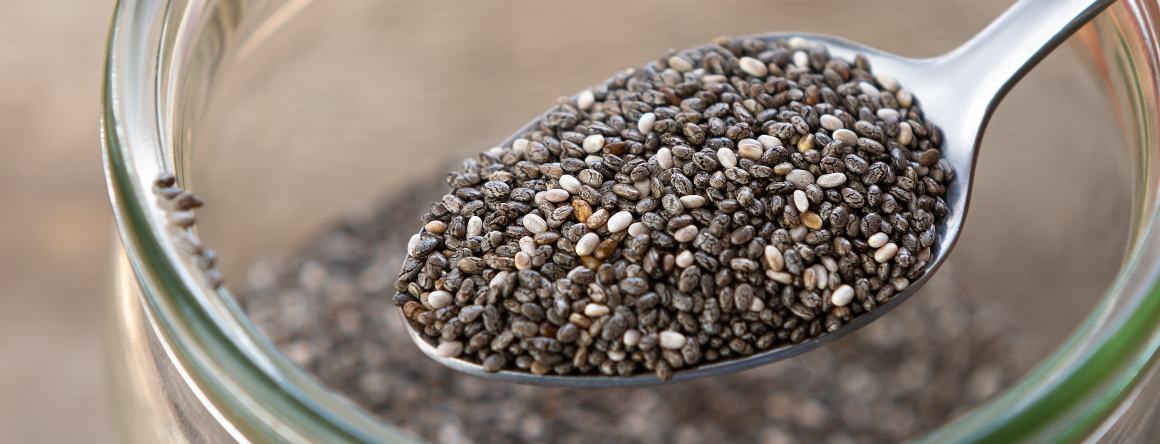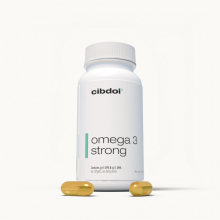How to Get Enough Omega-3 Without Eating Fish
Published:
Omega-3 fatty acids are incredibly important for overall health. They provide many benefits for your heart, brain, eyes and more.
Contents:
- Why Omega-3s Matter
- How Much Omega-3 Do You Need?
- Top 10 Non-Fish Omega-3 Sources
- Tips to Get Enough Omega-3
-
Frequently Asked Questions
- Q: Are plant omega-3s as good as fish oils?
- Q: Do I need to avoid fish oils if I’m vegetarian?
- Q: Is krill oil better than fish oil?
- Q: What’s better: flaxseeds or flaxseed oil?
- Q: Can you get too much omega-3?
- Q: How do I know if I’m getting enough omega-3?
- Q: Are DHA supplements only for pregnant women?
- Q: Do omega-3 supplements really work?
- The Bottom Line
However, many people avoid fish, which is the most common source of omega-3s. Fortunately, there are plenty of other ways to get enough omega-3 without eating fish.

Why Omega-3s Matter
Before discussing how to get omega-3s from non-fish sources, let's look at why these fats are so important.
Heart Health
Omega-3s, particularly EPA and DHA, provide major benefits for heart health. They can:
- Lower triglycerides - High triglycerides are a risk factor for heart disease. Omega-3s can lower triglycerides by up to 30% (1).
- Reduce blood pressure - Omega-3s can lower blood pressure, especially in people with high blood pressure and those who don't eat much fish (2).
- Prevent plaque buildup - Omega-3s can keep plaque from building up in your arteries, reducing risk of heart attack and stroke (3).
- Reduce arrhythmias - Omega-3s may reduce likelihood of abnormal heart rhythms that can lead to sudden cardiac death (4).
- Improve cholesterol - Omega-3s raise levels of "good" HDL cholesterol and lower "bad" LDL cholesterol and VLDL triglycerides (5).
Brain Health
Omega-3 fatty acids play an important role in brain health and development.
- Improve memory and thinking - Adults with higher intakes of omega-3s have better memory and cognitive function (6, 7).
- Fight depression - Several studies link higher omega-3 intake and blood levels to reduced depression (8).
- Support fetal brain development - Omega-3s are critical for brain development in babies before and after birth (9).
- Benefit aging brains - Omega-3s may slow age-related mental decline and Alzheimer's disease (10).
Eye Health
Omega-3s are concentrated in your retina and play a key role in eye development and health.
- Reduce macular degeneration - Eating more omega-3s reduces risk of age-related macular degeneration (AMD), a leading cause of blindness (11).
- Fight dry eye disease - Omega-3 supplements can treat dry eye disease, improving tear production and quality (12).
- Benefit vision in kids - Higher omega-3 intake during pregnancy reduces child's risk of poor vision (13).
Anti-Inflammatory Effects
Inflammation is at the root of many chronic diseases. Omega-3s have powerful anti-inflammatory properties.
- Reduce inflammation - Omega-3s can lower inflammatory markers like C-reactive protein (CRP) (14).
- Help arthritis - Omega-3s can reduce joint stiffness and pain in people with rheumatoid arthritis (15).
- Potentially fight autoimmune diseases - Omega-3s may help manage lupus, eczema, Crohn's disease and other autoimmune conditions (16).
Other Benefits
Some other potential benefits linked to omega-3s include:
- Smoother, more hydrated skin (17)
- Reduced menopausal symptoms (18)
- Improved body composition (19)
- Healthier pregnancy and baby (20)
- Protection against certain cancers (21)
How Much Omega-3 Do You Need?
Most health organizations recommend getting at least 250–500 mg of combined EPA and DHA per day for optimal health (22, 23).
Higher intakes of 1,000–2,000 mg per day are sometimes recommended for people who need to lower triglycerides or blood pressure (24).
Pregnant and breastfeeding women are advised to get at least 300–900 mg of DHA daily. Kids should take in at least 250–500 mg per day, depending on age (25).
Vegans and vegetarians are often deficient in omega-3s, so may need to take higher dose supplements or focus on eating ALA-rich foods (26).
When reading supplement labels, you want a high combined total of EPA and DHA — not just fish oil. ALA from plants only converts at a rate of 5–10% into EPA and 1–5% into DHA (27).
Top 10 Non-Fish Omega-3 Sources
Many non-fish foods contain ALA, while a few land-based options provide DHA and EPA. Here are the top 10 non-fish sources:
1. Chia Seeds
Chia seeds are the richest plant source of omega-3s.
One ounce (28 grams) of chia seeds provides (28):
- Fiber: 10 grams
- Protein: 4 grams
- ALA: 5,000 mg
- Calories: 140
Chia seeds provide more omega-3s than salmon gram for gram. You can add them to smoothies, oatmeal, yogurt, salads and more.
2. Flaxseeds
Flaxseeds, or linseeds, are the next best plant source of omega-3 fats after chia seeds.
One ounce (28 grams) of flaxseeds has (29):
- Fiber: 8 grams
- Protein: 6 grams
- ALA: 2,300 mg
- Calories: 150
Flaxseeds need to be ground to make the omega-3s available for absorption. Try adding ground flax to smoothies, oats and baked goods.
3. Walnuts
Walnuts are very nutritious, providing 2,500 mg of ALA per 1-ounce (28-gram) serving (30).
They're a tasty, plant-based source you can easily add to salads, yogurt and snacks.
4. Soybeans
Whole soybeans are an omega-3 rich legume.
A half cup (170 grams) of boiled soybeans contains (31):
- Fiber: 10 grams
- Protein: 29 grams
- ALA: 1,000 mg
- Calories: 298
Edamame beans, tofu and other processed soy foods also contain ALA.
5. Hemp Seeds
Hemp seeds provide 1,200 mg of ALA per ounce (28 grams) along with (32):
- Fiber: 2 grams
- Protein: 10 grams
- Calories: 170
Hemp seeds have a pleasantly nutty flavor and can be added to cereal, yogurt and salads.
6. Brussels Sprouts
This cruciferous veggie has omega-3s, with 135 mg of ALA per half cup (44 grams) (33).
Lightly steaming these miniature cabbages keeps their nutrients intact. Brussels sprouts make a healthy side dish.
7. Algal Oil
Algal oil provides non-fish sources of EPA and DHA. It's made from marine algae, which absorb DHA and EPA from the ocean (34).
A half teaspoon (2.5 ml) of algal oil delivers (35):
- DHA: 170 mg
- EPA: 110 mg
Algal oil has no fishy taste and can be used in cooking or smoothies. It's also used in some milk, yogurt and salad dressings.
8. Seaweed
Seaweed, such as spirulina and chlorella, contains up to 250 mg of omega-3s per ounce (28 grams) (36).
In addition to being rich in protein, seaweed packs numerous health benefits. Try adding it to soups, smoothies or salads.
9. Oysters
These shellfish are low in mercury and a good source of omega-3s, with 500 mg in 3 ounces (85 grams) (37).
Oysters also provide zinc, iron, selenium, vitamin B12 and vitamin C. However, some people should limit oyster intake due to food safety concerns.
10. Kidney Beans
Kidney beans are a rich plant source of omega-3s, with 430 mg of ALA per cup (172 grams) cooked beans (38).
They also pack 23 grams of protein and fiber in just 1 cooked cup. Kidney beans work well in chili, tacos, salads and many other dishes.
Tips to Get Enough Omega-3
If you don't eat much fish, scaling up these omega-3-rich foods provides easy alternatives:
- Use chia seeds and flaxseeds often — Add them to smoothies, oatmeal, yogurt, baked goods and salads.
- Snack on walnuts — Enjoy a handful on their own or add walnuts to salads and baked goods.
- Cook with soybeans — Try soybeans, edamame, tofu and other soy-based proteins.
- Use oils high in ALA — Cook with canola, soybean and flaxseed oils instead of oils low in omega-3s.
- Eat seaweed — Add seaweed to soups, smoothies or as a seasoning. Dried seaweed makes a great snack.
- Consider an algal oil supplement — This special oil ensures you get daily EPA and DHA.
- Cook kidney beans — Beans go well in veggie burgers, chili, salads, rice dishes and more.
With a little planning, you can easily meet your omega-3 needs from non-fish sources. Prioritize these foods and make simple swaps to get all the benefits of omega-3s without fish.
Frequently Asked Questions
Still have questions about getting omega-3s without fish? Here are answers to some common questions.
Q: Are plant omega-3s as good as fish oils?
Algae and plant-based omega-3s have powerful health benefits. However, EPA and DHA from fish are more efficiently used by your body. If you don't eat fish, take an algal supplement to get preformed EPA and DHA.
Q: Do I need to avoid fish oils if I’m vegetarian?
Fish oils aren’t technically vegetarian, though some vegetarians are okay taking them. Algal oil supplements made from marine algae provide an excellent alternative.
Q: Is krill oil better than fish oil?
Krill are tiny shrimp. Krill oil provides omega-3s similarly to fish oils. For vegetarians, algal oil is the best option.
Q: What’s better: flaxseeds or flaxseed oil?
Whole flaxseeds provide fiber and protein in addition to omega-3 fats. But flax oil provides the highest concentration of ALA. Use both for benefits.
Q: Can you get too much omega-3?
Getting too many omega-3s from foods is unlikely. However, very high-dose fish oil supplements may increase risks of bleeding or interact with medications. Talk to your doctor.
Q: How do I know if I’m getting enough omega-3?
Symptoms of omega-3 deficiency are nonspecific. Testing your omega-3 blood levels provides the best assessment of your status. Aim for an omega-3 index of 8–12%.
Q: Are DHA supplements only for pregnant women?
DHA supplements benefit pregnant and breastfeeding women most. However, DHA supplements can also benefit people with low seafood intake, heart problems or memory concerns.
Q: Do omega-3 supplements really work?
Quality omega-3 supplements delivering at least 500 mg combined EPA and DHA per day provide proven benefits for heart health, brain function and more.
The Bottom Line
Omega-3 fatty acids are extremely beneficial, even if you don't eat fish. The top plant-based sources are chia seeds, flaxseeds, walnuts, soybeans and Brussels sprouts. Algal oil provides a vegan source of EPA and DHA.
Prioritizing these omega-3-rich foods and taking supplements if needed ensures you get enough of these essential fats on a vegetarian or vegan diet.















